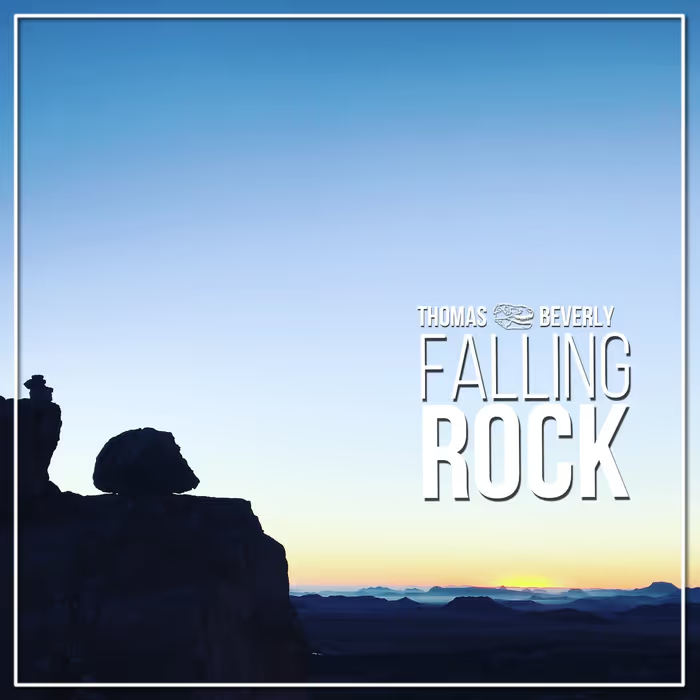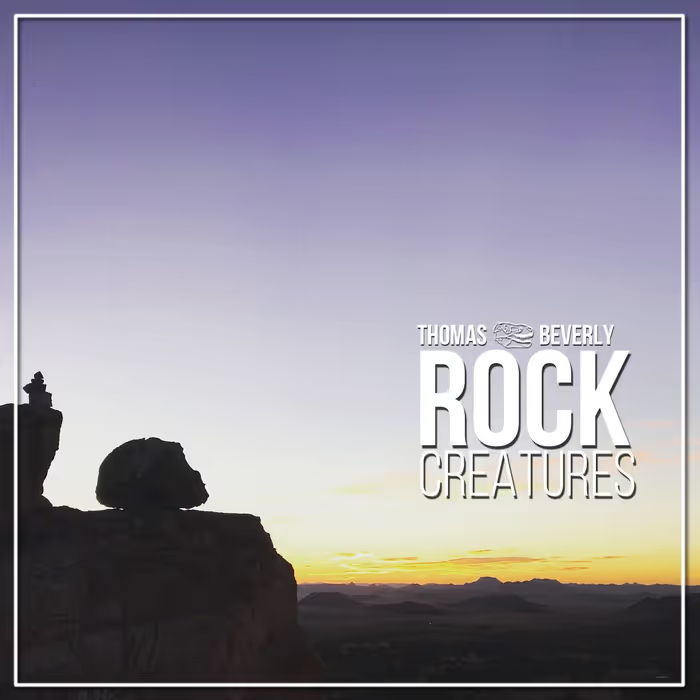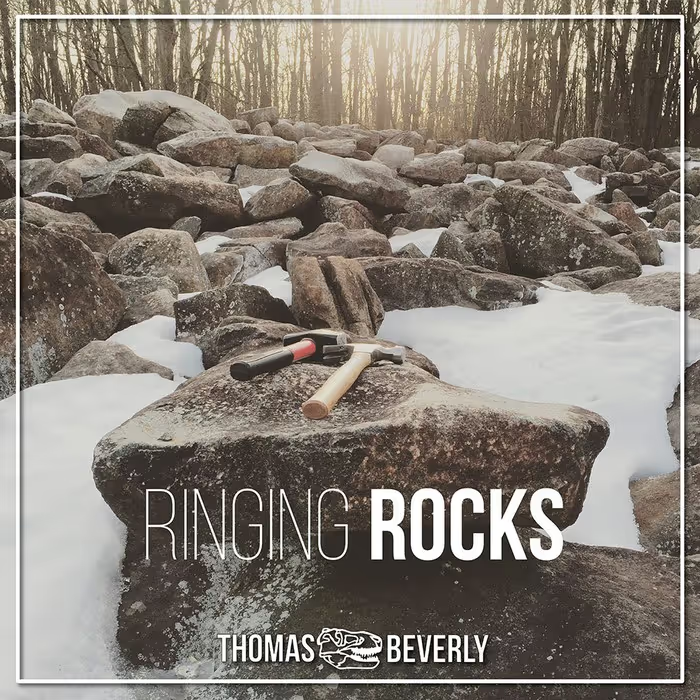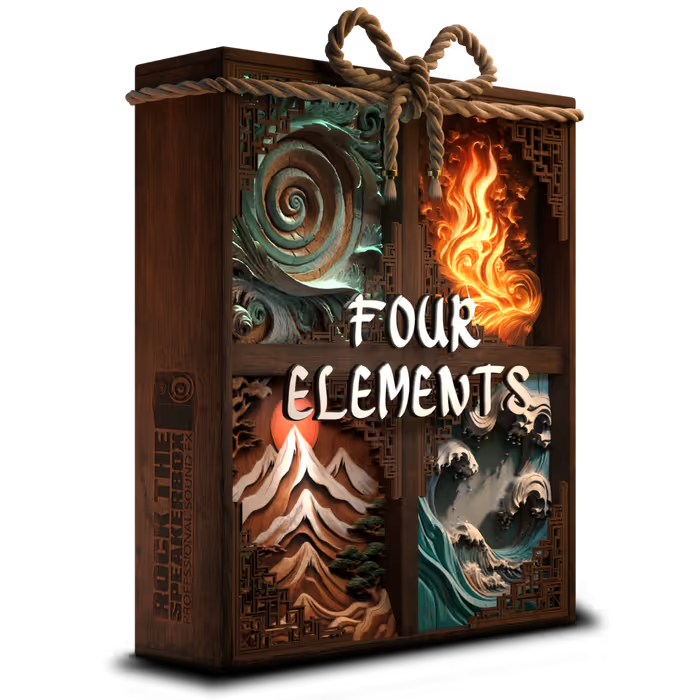My most recent sound library series focuses on capturing a broad spectrum of rock sounds from mimicking animal calls to recording tumultuous rock impacts. These two new libraries complement the chime-like resonance in my previous Ringing Rock collection.
WHAT ROCKS MAKE CREATURE VOCALIZATIONS?
It took insane amounts of experimentation to find evocative sounds from the rocks I had collected for this sound library. I’ve done several sound design libraries thus far, but this library took the most trial and error to date. For comparison, I kept about 50% of the material I recorded for Bowed Cactus, but I only ended up keeping about 5% of the rock material I recorded for Rock Creatures.

After much experimentation, I had an epiphany when I discovered I could create a resonating chamber by placing two thin concave and convex rocks together! Then, I scraped a third rock against the chamber and instantly discovered interesting harmonics and formant sounds. Many of the rock “creature” sounds were born from the perfect 5 rocks you see above. If you look carefully, you can see the concave section in the top left rock and the convex section on the bottom of the top right rock. Once I had the right “rock instrument” built, the perfect sound was in the performance. Hear the concave/convex resonating chamber performed in the short video below.
HOW IT’S MADE VIDEO:
I used a variety of rocks and minerals to make sounds that range from guttural boulder groans to elephant-like roars to quartz crystal chalkboard-like screeches. Hear the full variety of rock “creatures” I created in the demo below.
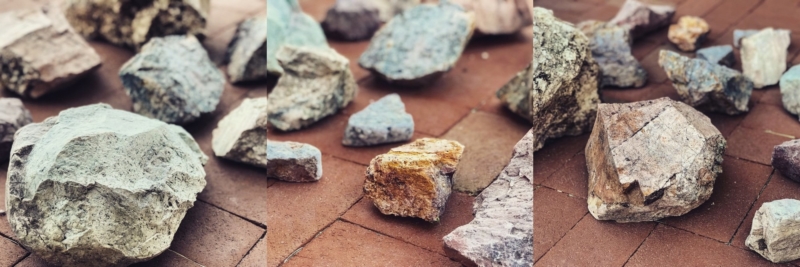
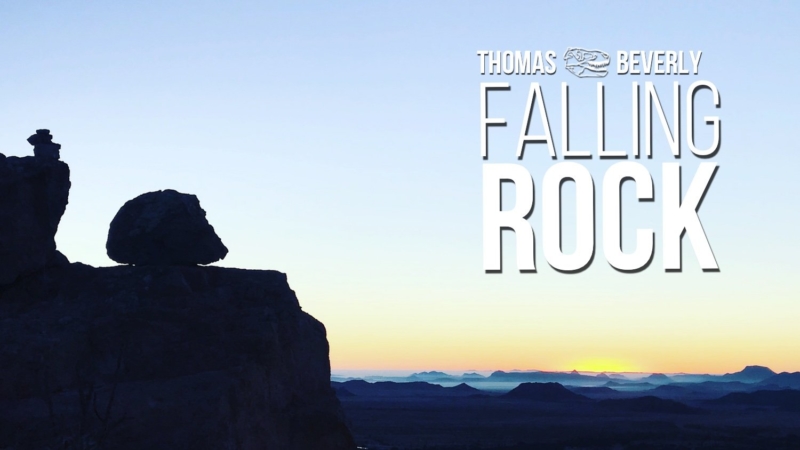
WHAT ROCKS MAKE THE BEST FALLING SOUNDS?
I recorded the best falling rock sounds in the resonant echo chamber of a narrow canyon in West Texas. When I threw the first 50-pound rock down the canyon, I experienced genuine childlike joy. That first rock shattered into tens of pieces and ricocheted down the canyon with a full ten second decay. It was a phenomenal sound and I felt like I was a 10-year-old boy again, innocently smashing things to make cool sounds. I couldn’t believe I get paid to do this! In that moment, I felt so fortunate that my recording work leads me to such interesting adventures.
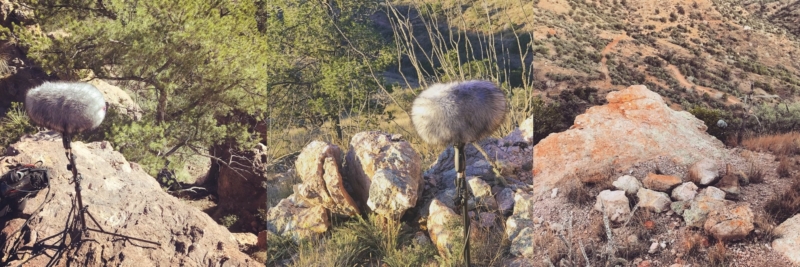
RECORDING CHALLENGES:
For this sound library series, I was lucky to have access to private property with an ample supply of volcanic rock (mostly rhyolite) and several places where I could safely send massive boulders careening down rocky canyons and shattering from clifftop falls.
The biggest challenge was that it took many hours to move the rocks into the staging areas. My body also had to adjust to the elevation changes because I was recording at an elevation of 6,000 feet. Most rocks I was throwing into the canyon were between 50 to 100 pounds and a few were 200-500 boulders I was able to slide or use leverage to launch off clifftops. In short, it was quite the field recording workout. It took me several days of moving rocks and then waiting for perfect recording conditions without wind before recording the sounds in this collection.
My favorite impacts were when the rock completely shattered and the debris went careening down the mountain for upwards of 10 seconds!

Listen to the variety of falling rocks I was able to capture for this library in the full demo:
LESSONS LEARNED:
- When trying to create rock creatures, look for thin concave and convex stones that you can put together to create a resonating chamber. Then use a third stone to activate the resonating chamber and you’ll start hearing evocative harmonics and formant sounds.
- Research the Mohs Hardness Scale before working with rocks and minerals. If you know the hardness of the rocks you will be using, you won’t waste time with rocks that are too soft to make great scraping sounds. The scale goes from zero (talc) to ten (diamond). The hardest substance I used in this library was quartz, which is rated a seven. I found lots of rock that are great for scraping are in the five to seven range. Read more info on the hardness scale – here.
- Listen to recordings of animals calls before and during your recording session. I used elephants, lions, loons, sandhill cranes to name a few. Listen to the recording of the call, then try to recreate it by performing the rocks. This will help you create genuine sounding rock vocalizations.
FIELD RECORDING TIPS:
- Short, practical field recording advice for beginners to established pros.
- New tips posted as they are discovered.
- See five crowd favorites below, or view the full list of 50+ tips on Twitter – here.
Five Crowd Favorites:
Field Recording Tip: Think of field recording as meditation. As a way of being fully in tune with your surrounding environment. #fieldrecordingtips
— Thomas Rex Beverly (@trexbeverly) October 10, 2018
Field Recording Tip: Be careful recording at night. Owls can mistake your blimp for a tasty rabbit. I had one dive down and scare me half to death. For real, be careful. #fieldrecordingtips
— Thomas Rex Beverly (@trexbeverly) September 12, 2018
Field Recording Tip: Your mics will pick up a commercial airliner for 1000 square miles around you. That is a square of about 33 miles on each side, where you’re at the center. Gordon Hempton’s books taught me that one. #fieldrecordingtips
— Thomas Rex Beverly (@trexbeverly) October 22, 2018
Field Recording Tip: The minimum distance you need to be from a paved road is 5 miles. Preferably, closer to 8-10 miles (especially in flat terrain) to get great recordings with no distant engine hums. #fieldrecordingtips
— Thomas Rex Beverly (@trexbeverly) October 18, 2018
Field Recording Tip: I like to keep my mics connected and recorder turned on when hiking. It makes for slower progress on the trail, but I’ve gotten some amazing wildlife I otherwise would have missed. Roosevelt Elk, Sandhill Cranes, and Loons to name a few. #fieldrecordingtips
— Thomas Rex Beverly (@trexbeverly) September 21, 2018
FIELD RECORDING BOOK RECOMMENDATIONS:
- The Hidden Life of Trees by Peter Wohlleben. You’ll never see a forest in the same way after reading this book. If get excited about nature field recording I highly recommend it. I specifically love the audiobook.
- The Obstacle is the Way by Ryan Holiday. Fantastic book about Stoicism and overcoming obstacles. I like to read it while waiting for airplanes that are ruining my nature recordings to fly away :)
THANKS FOR READING
Sound libraries are works of art and I hope you have enjoyed this behind the scenes look into my work. I’ve put a little piece of myself into each recording, and I hope that you love each recording as much as I enjoyed making them.
A big thanks to Thomas Rex Beverly for giving us a look at one of his beautiful sound libraries!


